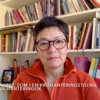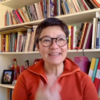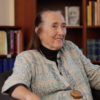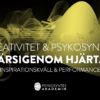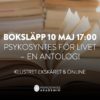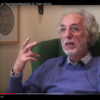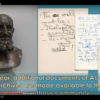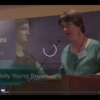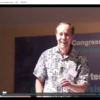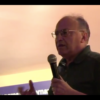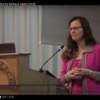PsykosyntesAkademin welcomed David Elliott, Ph.D., on 7-8 November, 2016, to lead a unique workshop for practising Psychosynthesis Therapists, PsA.
Continous Professional Development is at the core of every therapist’s ambition to stay ahead in their profession and practise. So when the workshop”Treating Insecure Attachment in adults: The Three Pillars of Comprehensive Attachment Repair” was announced, it was quickly filled with 18 interested participants.
David Elliott, Ph.D., workshop leader and co-author of the recently published book ”Attachment Disturbances in Adults: Treatment for Comprehensive Repair”, has already given several workshops in the US, both on the East and West Coast. We took the opportunity to ask him a few questions:
David, you are a psychologist and practising psychotherapist in the States. We are curious to know how you decided to bring your work to Stockholm and to PsykosyntesAkademin?
From my experience of working to help people heal and resolve the problems associated with attachment insecurity, the available treatment approaches have value but are also limited. With Dan Brown and several other colleagues, we developed a treatment model and set of methods that draws from the best of what’s been available and yet goes further to be more integrative, comprehensive, and efficient.
There has been a hunger among clinicians for treatment of attachment security that is both effective and efficient. In our experience, and in the experience of clinicians who have learned our “Three Pillars” methods, these methods work – clients show beneficial changes rather quickly, and the larger goal of establishing attachment security is practical and realistic. Though of course the work is not always easy, clients and therapists alike find the methods engaging and quite rewarding.
I am dedicated to doing all I can to make these methods available to the community of therapists interested in working with people with attachment insecurity. The book is quite clear and comprehensive as a ‘how-to’ guide, but of course in-person teaching and guided practice brings significant benefit and rapid learning. So when I learned of the possibility of teaching at PSA I was very keen to be available for that.
There was particular appeal to teaching people trained in psychosynthesis. Back in the early 1990’s, I trained in psychosynthesis and spiritual psychology with Thomas Yeomans, and continue to find great value in the perspectives and methods that are integral to PS. There are many principles and practices that are fundamental to psychosynthesis that are elements of the Three Pillars methods. For example, the First Pillar involves creating new, positive attachment representations through the use of mental imagery, in the context of strong awareness of body experiences. The imagery has similarities to the familiar ‘ideal model’ imagery work in PS, and honoring and including the body dimension is consistent with the PS approach.
On a personal note, of course a big factor in my bringing this work to Stockholm is my wife, Linda Thörn Elliott, who is a senior teacher at PSA and an enthusiastic promoter of psychosynthesis practice (and of me!). Thank you Linda!
So, what was it like for you to have this workshop in a Swedish setting?
I would have liked to be able to teach in Swedish! But other than that, it was wonderful to experience the interest, attentiveness, enthusiasm, intelligence, and creativity of the participants. I enjoyed how people brought in their recognition of how their knowledge and experience of psychosynthesis is a helpful foundation for understanding and practicing the work to help clients develop new, positive attachment representations.
What is important to know about attachment and what are your Three Pillars of attachment repair?
A few of the main points about attachment are as follows: In Western cultures, about 65% of people have secure attachment and about 35% have some form of insecure attachment. So a rather high proportion of people suffer from the problems associated with attachment insecurity, which include significant relationship difficulties, problems with self-esteem and other aspects of self-experience, and emotion regulation abilities. Also, the presence of attachment insecurity makes people more vulnerable to having other types of psychological and emotional problems. So if someone has attachment insecurity, treating that first can make it easier to resolve the other problems. This is especially true and important for treating the aftereffects of trauma and abuse – if someone with such history also has attachment insecurity, trying to work directly with the trauma and abuse often leads to greater turmoil, disorganization, and distress that interferes with healing. But if an underlying attachment insecurity is treated first, the person has a stronger psychological and emotional structure that makes subsequent trauma/abuse treatment more effective and efficient.
It is important to highlight that though attachment insecurity is rather common, many of our clients do not have insecure attachment. It’s common to have a particular attachment style that parallels one of the categories of insecure attachment, but we as therapists must not over-diagnose clients as having more severe underlying problems than they actually have. That being said, the Three Pillars methods can have value for clients who have insecure attachment and for clients who have consistent problems associated with an insecure attachment style.
The Three Pillars refer to the treatment for the three primary areas of difficulty associated with attachment insecurity: The First Pillar involves the creation of new, positive internal models of attachment relationships that replace the old, insecure models; the Second Pillar promotes the development of metacognitive ability, which is typically impaired in people with attachment insecurity; and the Third Pillar focuses on helping clients develop better collaborative, cooperative relational skills, which are also usually impaired in people with attachment insecurity.
How do you see that the practise of psychosynthesis connects with your working model of treatment and psychological repair and what does that mean for patients and clients?
As I mentioned above, especially the First Pillar methods will feel familiar to therapists with psychosynthesis training. The inclusion and focus on body-based experience, the use of ideal model mental imagery, and also the respect for and inclusion of the client’s ability to experience his or her child self are all consistent with PS principles and practices. So I think that therapists with a PS orientation and their clients will find that the Three Pillars methods fit well with PS theory, method, and practice.
Where does your own particular interest in attachment work come from? What has been your inspiration?
No doubt my interest in attachment work has its foundations in my own early experiences as an infant. And of course as an adult psychotherapist, I have seen so many clients who come with problems and needs related to their own problematic early attachment experiences. It has been a great blessing to have worked closely with Dan Brown as a teacher and mentor – his intellectual and creative brilliance has been a tremendous inspiration to me, and working with him and with several other colleagues in developing the Three Pillars model has been deeply rewarding personally and professionally.
PsykosyntesAkademin is hoping to offer more workshops and seminars with you, how do you view the possibility of returning to Sweden to do more work?
I would be delighted to return to the PsykosyntesAkademin to offer more teaching and workshops. As I am in Stockholm quite frequently, this is a realistic possibility.
Thank you David!
Ann Marie Lamb
And here are some voices from the workshop:
”Tack, det var fantastiska dagar! Det var en fin blandning av konkret verktygslåda och djupt arbete.”
”Ett nytt synsätt på hur ett anknytningsmönster kan angripas på/arbeta med/lösas/helas. Det mest givande var att få prova på och de tekniker som visades. Ser fram emot att ta in det i terapirummet.”
”Excellent content, pace, theory and practise, super knowledge plus experience, beautifully presented. High level!”



